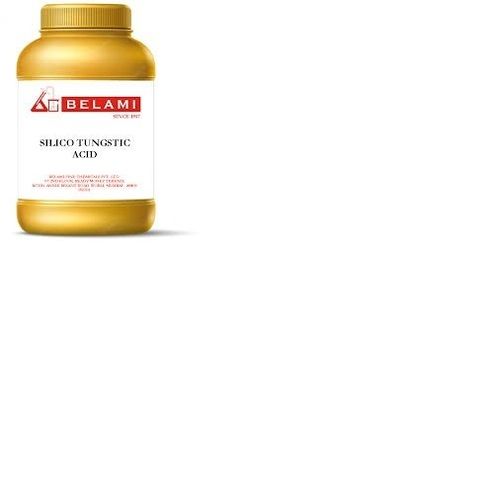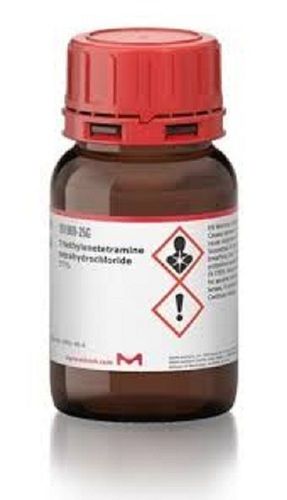Welcome to Our Company
Sodium Lauryl Ether Sulphate
Product Details:
- Storage Room Temperature
- Ph Level 8.5
- Form Paste
- Solubility In Water
- Grade Industrial Grade
- Type Sodium Lauryl Ether Sulphate
- Usage Industrial
- Click to View more
X
Sodium Lauryl Ether Sulphate Price And Quantity
- 1 Kilograms
Sodium Lauryl Ether Sulphate Product Specifications
- Industrial
- Industrial Grade
- Industrial
- Sodium Lauryl Ether Sulphate
- In Water
- Paste
- 8.5
- Room Temperature
Product Description
Available in more than 99% pure form, Sodium Lauryl Ether Sulphate is well known for its strong emulsification attribute, good foaming characteristics and excellent dispersion rate. It also possesses detergent like attribute. It has good wetting property. Free from unpleasant smell, this chemical has around 8.5 ph value (around). Its foaming attribute is used to produce foam of shampoo and firefighting spray. Stable chemical property, standard shelf life and non toxic content are the key aspects of this chemical.
Uses of Sodium Lauryl Ether Sulphate:
1. Shampoos: SLES is a key ingredient in many shampoos due to its ability to create a rich and stable lather, effectively removing dirt, oil, and impurities from the hair and scalp.
2. Body Wash and Shower Gels: It is used in body washes and shower gels to produce a luxurious foam, allowing for effective cleansing and a pleasant bathing experience.
3. Facial Cleansers: SLES is used in facial cleansers to help remove makeup, excess oil, and dirt from the skin, leaving it feeling clean and refreshed.
4. Toothpaste: SLES contributes to the foaming action in toothpaste, helping to disperse the toothpaste evenly in the mouth and clean the teeth and gums effectively.
5. Dishwashing Detergents: It is used in dishwashing liquids to create a rich lather and improve the detergent's ability to remove grease and food residues from dishes and cutlery.
6. Laundry Detergents: SLES is commonly used in laundry detergents to aid in the removal of stains and dirt from clothes during the washing process.
7. All-purpose Cleaners: It is included in various household cleaning products to enhance their cleaning power and ability to remove dirt and grime from surfaces.
8. Industrial Cleaning: SLES finds applications in industrial settings for cleaning processes that require foaming and emulsifying properties, such as in the cleaning of equipment and machinery.
Sodium Lauryl Ether Sulphate Properties:
1. Chemical Structure: SLES is a mixture of ethoxylated lauryl alcohol molecules, where lauryl alcohol is derived from natural sources like coconut oil or palm kernel oil. The ethoxylation process involves adding ethylene oxide units to the lauryl alcohol chain.
2. Surfactant and Foaming Agent: SLES is an effective surfactant and foaming agent, meaning it can lower the surface tension of water and form stable foam. This property makes it valuable in various cleansing products, including shampoos, body washes, and detergents.
3. Anionic Surfactant: SLES is classified as an anionic surfactant because it carries a negative charge when dissolved in water. The negatively charged portion of the molecule allows it to repel other negatively charged particles, facilitating the removal of dirt and grease.
4. Water Solubility: SLES is highly water-soluble, making it easy to incorporate into water-based formulations.
5. Cleaning Power: SLES is effective at removing oils, grease, and dirt from various surfaces, including hair, skin, and household items. It helps disperse these substances into the water so they can be rinsed away.
6. pH Sensitivity: The performance of SLES can vary with pH levels. It is most effective in mildly acidic to neutral conditions.
7. Biodegradability: SLES is considered biodegradable under appropriate conditions. However, like all surfactants, its environmental impact can depend on factors such as concentration, usage, and local waste treatment systems.
8. Irritation Potential: While SLES is generally safe and well-tolerated by most people, it can cause skin and scalp irritation in some individuals, especially if used in high concentrations or in products with a low pH.
9. Compatibility: SLES is compatible with other surfactants and ingredients commonly used in personal care and cleaning products, making it a versatile ingredient in various formulations.
FAQ:
1. What is Sodium Lauryl Ether Sulphate (SLES)?
Ans: Sodium Lauryl Ether Sulfate (SLES) is a surfactant commonly used in personal care and cleaning products due to its foaming and cleaning properties. It is derived from natural sources like coconut oil or palm kernel oil and is an ethoxylated compound with both hydrophilic and hydrophobic properties.
2. What products contain SLES?
Ans: SLES can be found in various personal care products such as shampoos, body washes, facial cleansers, toothpaste, and shower gels. It is also used in household cleaning products like dishwashing detergents and all-purpose cleaners.
3. Is SLES safe to use?
Ans: SLES is considered safe for use in cosmetic and cleaning products when used as directed. However, some individuals may be sensitive to it and experience skin or scalp irritation. It is essential to follow product instructions and discontinue use if any adverse reactions occur.
4. Is SLES a natural ingredient?
Ans: SLES is derived from natural sources like coconut oil or palm kernel oil, but it undergoes a chemical ethoxylation process to produce the final compound. While it has natural origins, the final product is a synthetic surfactant.
5. Is SLES biodegradable?
Ans: SLES is considered biodegradable under appropriate conditions. However, its environmental impact can depend on factors such as concentration, usage, and local waste treatment systems.
6. Does SLES cause hair loss?
Ans: There is no evidence to suggest that SLES causes hair loss. When used in cosmetic products like shampoos, SLES primarily acts as a surfactant to cleanse the hair and scalp. Hair loss can be caused by various factors, but there is no direct link between SLES and hair loss.
7. Can SLES be used in eco-friendly products?
Ans: SLES can be used in eco-friendly or environmentally conscious products, but it is essential to consider its biodegradability and overall environmental impact. Manufacturers may use SLES in lower concentrations and ensure proper waste treatment to minimize its impact on the environment.
8. Can SLES be used in sensitive skin products?
Ans: SLES can cause irritation in some individuals, especially those with sensitive skin. For people with sensitive skin, it is advisable to choose products without SLES or to use products specifically formulated for sensitive skin.
9. Is SLES the same as SLS (Sodium Lauryl Sulfate)?
Ans: SLES and SLS (Sodium Lauryl Sulfate) are related but not the same. Both are surfactants with similar properties, but SLES is considered milder and less irritating than SLS. SLS has a smaller molecular size, making it more likely to penetrate the skin, potentially leading to more irritation.
10. Can I make my own products without SLES?
Ans: Yes, you can make your own personal care and cleaning products without using SLES. There are various natural and eco-friendly surfactants and alternatives available for DIY formulations, such as coconut-based surfactants, soapwort extract, or plant-derived cleansers. Always ensure proper formulation and safety guidelines when creating homemade products.
Tell us about your requirement

Price:
Quantity
Select Unit
- 50
- 100
- 200
- 250
- 500
- 1000+
Additional detail
Mobile number
Email









